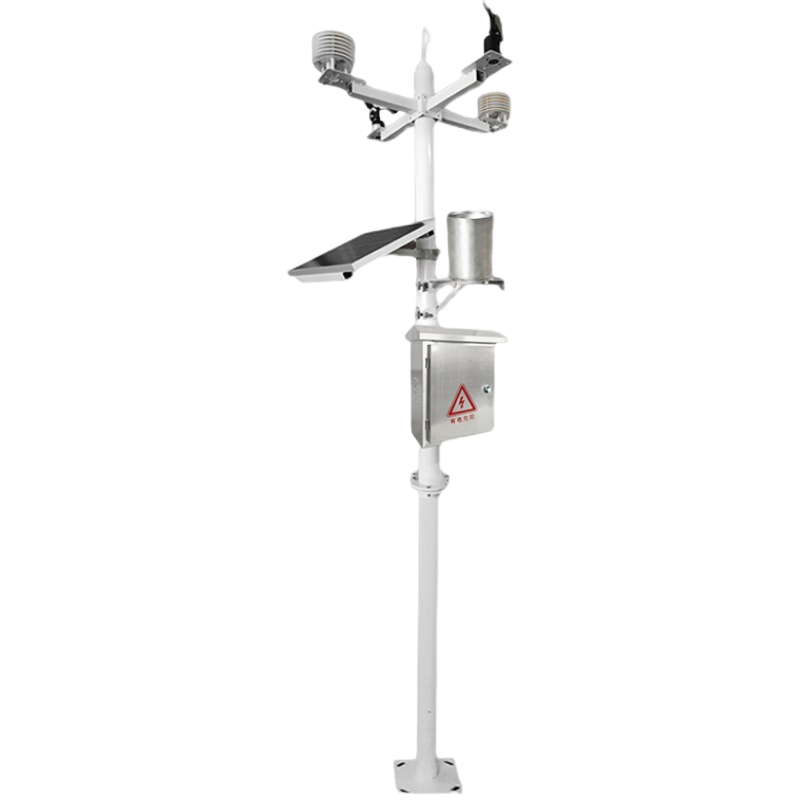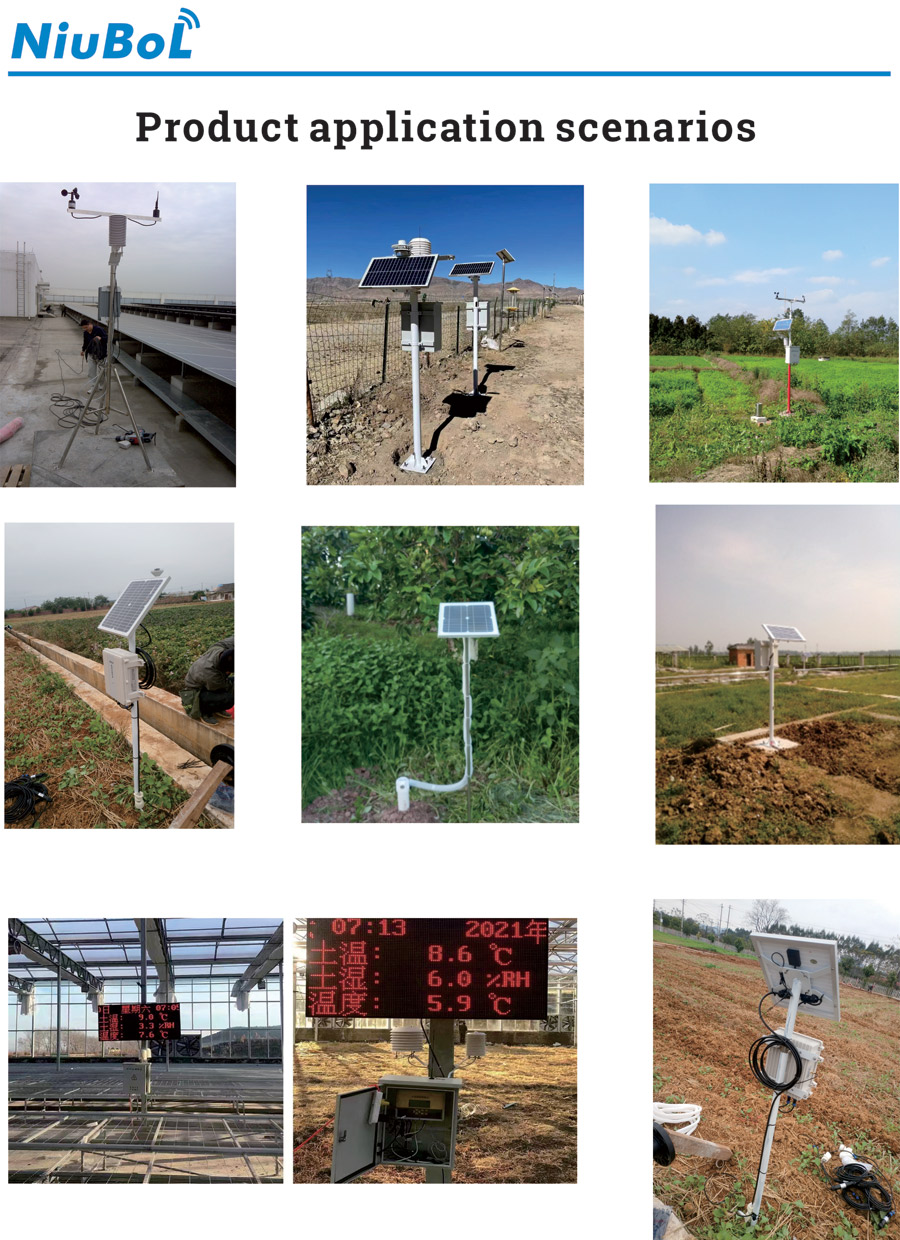

— Blogs —
—Products—
 Consumer hotline +8618073152920
Consumer hotline +8618073152920 WhatsApp:+8615367865107
Address:Room 102, District D, Houhu Industrial Park, Yuelu District, Changsha City, Hunan Province, China
Technical Support
Time:2023-12-16 17:17:14 Popularity:3516
A weather station is a device used to measure and record various weather parameters. These parameters include temperature, humidity, air pressure, wind speed and direction, rainfall, and so on. Weather stations typically consist of multiple sensors, data collectors, and computer software that can monitor and record weather data in real time and generate related charts and reports.
Weather stations can provide a variety of applications, such as:
1. Agriculture: Farmers can use weather stations to monitor the environmental conditions in which crops are growing, as well as to determine the best irrigation and fertilization times.
2. Aviation and navigation: Weather stations can be used to predict weather conditions and provide pilots and crew with accurate weather information to help them make decisions and ensure the safety of flight and navigation.
3. Hydrology: Weather stations can be used to monitor rainfall and help water authorities manage water resources, such as reservoirs and irrigation systems.
4. Weather forecast: Weather station data can be used to make weather forecasts to help people understand future weather conditions and make corresponding arrangements.
In short, weather stations are very important meteorological instruments that can provide important information about the weather and its changes.

Installing a weather station involves several steps. Here is a general guide on how to install a basic weather station:
1. Location Selection: Choose an appropriate location for your weather station. It should be an open area away from obstructions such as buildings, trees, or other objects that could interfere with the accuracy of the measurements.
2. Mounting: Install a sturdy and stable mounting system for your weather station. This can be a pole, tripod, or other suitable structure. Ensure it is securely attached to the ground or building.
3. Sensor Placement: Mount the various sensors at the appropriate heights and orientations. The temperature and humidity sensors should be positioned around 1.5 to 2 meters above the ground in an open area. The wind sensors (anemometer and wind vane) should be placed higher, typically at least 10 meters above the ground to avoid any obstructions.
4. Wiring: Connect the sensors to the data logger or weather station console using the provided cables. Follow the manufacturer's instructions for proper wiring and connections.
5. Power Supply: Ensure there is a reliable power supply for your weather station. This can be through an electrical outlet, battery power, or solar panels, depending on the type of weather station you have.
6. Calibration: Before starting the measurements, it is important to calibrate the sensors according to the manufacturer's instructions. This ensures accurate readings and reliable data.
7. Software Setup: Install any necessary software or apps provided by the weather station manufacturer on your computer or mobile device. This allows you to monitor and analyze the collected weather data.
8. Testing and Maintenance: Once everything is set up, test the weather station to ensure all sensors are functioning correctly. Regularly inspect and maintain the station to keep it clean and in good working condition.
In addition to the steps mentioned above, here are other things to be aware of when installing a weather station:
1. Avoid interference: When selecting the position, avoid any factors that may interfere with the sensor measurement. This includes power lines, buildings, trees, high walls, etc. Ensure that the sensor is free to receive accurate weather data.
2. Data recording frequency: Set the appropriate data recording frequency. According to the needs and equipment capabilities, select the appropriate time interval for data recording. Shorter time intervals can provide more detailed data, but also increase the pressure on data processing and storage.
3. Data storage and backup: Ensure that there is enough storage space to store long-term meteorological data. Backup your data regularly to prevent data loss or corruption.
4. Regular calibration: Regular calibration of weather station equipment to ensure accuracy. Different sensors may require different calibration methods and frequencies. Please refer to the manufacturer's instruction manual for calibration.
5. Maintenance and maintenance: Regular inspection and cleaning of sensors and equipment to ensure their normal operation. Especially in bad weather conditions, it is necessary to remove accumulated rain, snow or debris in time.
6. Data sharing and analysis: you can choose to share data with other weather enthusiasts, scientific research institutions or relevant departments as needed. Analyze and interpret the data using the provided software or tools.

Before installing a weather station, it is also recommended to carefully read and follow the detailed installation guide and operating manual provided by the manufacturer. as the process may vary depending on the model and features of your equipment. This ensures proper installation and accurate and reliable weather data.
3m-Bracket-Weather-Station-Installation-Instructions.pdf
Prev:Tipping Bucket Rain Gauge Installation and Maintenance
Next:Tipping bucket rain gauge installation requirements and common faults and solutions
Related recommendations
Sensors & Weather Stations Catalog
Agriculture Sensors and Weather Stations Catalog-NiuBoL.pdf
Weather Stations Catalog-NiuBoL.pdf
Related products
 Combined air temperature and relative humidity sensor
Combined air temperature and relative humidity sensor Soil Moisture Temperature sensor for irrigation
Soil Moisture Temperature sensor for irrigation Soil pH sensor RS485 soil Testing instrument soil ph meter for agriculture
Soil pH sensor RS485 soil Testing instrument soil ph meter for agriculture Wind Speed sensor Output Modbus/RS485/Analog/0-5V/4-20mA
Wind Speed sensor Output Modbus/RS485/Analog/0-5V/4-20mA Tipping bucket rain gauge for weather monitoring auto rainfall sensor RS485/Outdoor/stainless steel
Tipping bucket rain gauge for weather monitoring auto rainfall sensor RS485/Outdoor/stainless steel Pyranometer Solar Radiation Sensor 4-20mA/RS485
Pyranometer Solar Radiation Sensor 4-20mA/RS485
Screenshot, WhatsApp to identify the QR code
WhatsApp number:+8615367865107
(Click on WhatsApp to copy and add friends)
